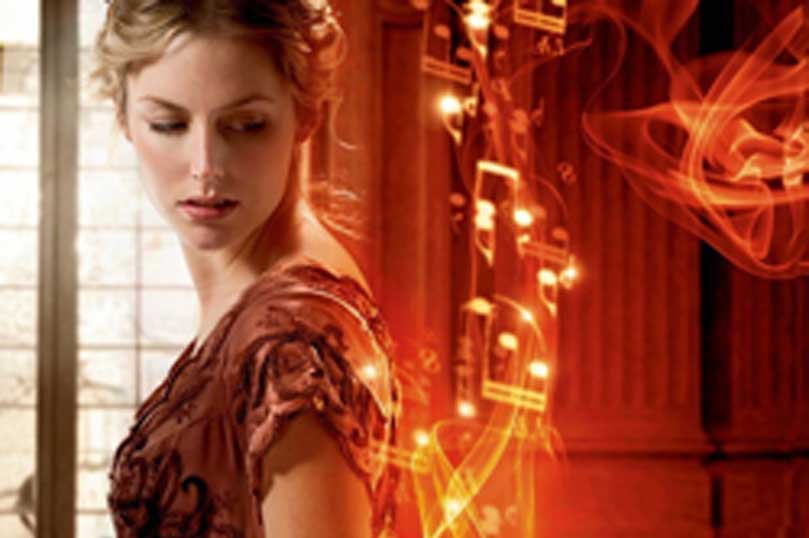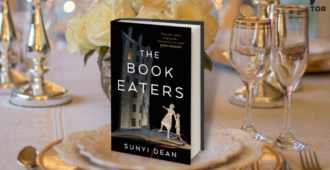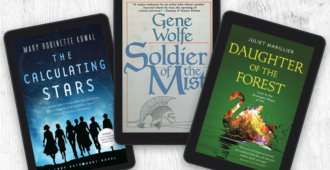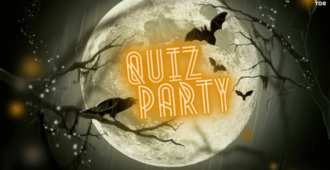Welcome to Throwback Thursdays on the Tor/Forge blog! Every other week, we’re delving into our newsletter archives and sharing some of our favorite posts.
A lot of our authors spend considerable amounts of time researching for their books. Often, they stumble across weird and interesting facts that stick with them. Mary Robinette Kowal is no different, and when her book Shades of Milk and Honey came out in August of 2010, she wanted to share some of the odd historical facts she discovered. To celebrate the release of her new book, Valour and Vanity, enjoy this blast from the past, and be sure to check back every other Thursday for more!
When one decides to write a historical novel, even if it is a fantasy, one must brace oneself for copious amounts of research. Research which feels as though it will never end. The curious thing about all this research is that much of it does not show up on the page. While writing Shades of Milk and Honey, set in an alternate England in 1814 I learned a number of things which surprised me. Here are a few my favorites.
What it means when a letter was crossed.
In Jane Austen’s day, sending letters was expensive and you were charged for the number of pages. The way to avoid a hefty postage fee was to write the letter, then turn the page 90 degrees and write across the previously written lines. (Trivia note: I had a reference to a crossed letter in Shades of Milk and Honey but cut it because it was too hard to explain and the fact that it was crossed wasn’t important to the story.) Curious about what a crossed letter looked like? Here’s an example from Miss Austen herself in the Morgan collection.
There is no such thing as a left shoe.
Until about the 1850s, left and right shoes were identical. Only by wearing them would the shoe begin to acquire a left and right shape. When Louis XVIII was fleeing Napoleon in 1815 he said, “…it’s my slippers that I regret most… Nobody understands what it means to lose slippers that have taken the mold of one’s foot.” While footwear is important, he might perhaps need to work on his priorities.
How to turn the table.
A formal dinner was a lengthy affair lasting several hours and had very rigid etiquette tied to it. Typically served in several courses, each course would consist of dishes already set upon the table. Gentlemen would be assigned to escort a lady to dinner, seating her on his right. He would help the lady with dishes and would converse with her during the first course. After the first course, all the dishes would be removed and replaced. A gentlemen would turn and converse with the lady on his left and vice versa. If you were pinned with an unfortunate conversationalist as a dinner partner, you couldn’t wait to turn the table.
Hello is not a word.
I am going to let you know a shameful thing. I slipped when writing Shades of Milk and Honey and use “Hello” in the first chapter of the novel but it’s not a word in 1814. I had rooted it out everywhere else and didn’t notice this one until recording the audio book. In 1814, the word “halloo” was most often used to call hounds. “Hullo” was usually an expression of surprise. Although “hello” is recorded as early as 1830, it didn’t become a standard greeting until the invention of telephone. To greet someone during the Regency one says “Good day” or perhaps “Good evening.”
There’s more information about the novel and the people behind the trailer at https://www.ShadesOfMilkAndHoney.com/trailer.
This article is originally from the August 2010 Tor/Forge newsletter. Sign up for the Tor/Forge newsletter now, and get similar content in your inbox twice a month!








Thanks, Mary!
I wonder what prompted the creation/invention of left and right shoes, given they didn’t start off that way.
Interesting additional note that I’ve learned since originally writing this. The custom of men escorting women into dinner doesn’t come into play until the Victorian era. During the Regency, the women processed in first, in order of precedence and sat where they wished. The men followed in a similar line afterwards and also sat where they wished.
All the stuff about turning the table is correct, thank heavens.
Hunh! I had no idea.
Another example of Victorian customs being cast “backward” in our minds?
I remember crossed letters from one of Lewis Carroll’s books of logic puzzles. “Crossed writing makes for cross reading” I had no idea what it meant at the time (world before google) but it is more or less what I expected. I cannot, however, imagine having handwriting neat enough to be legible in two directions at once.